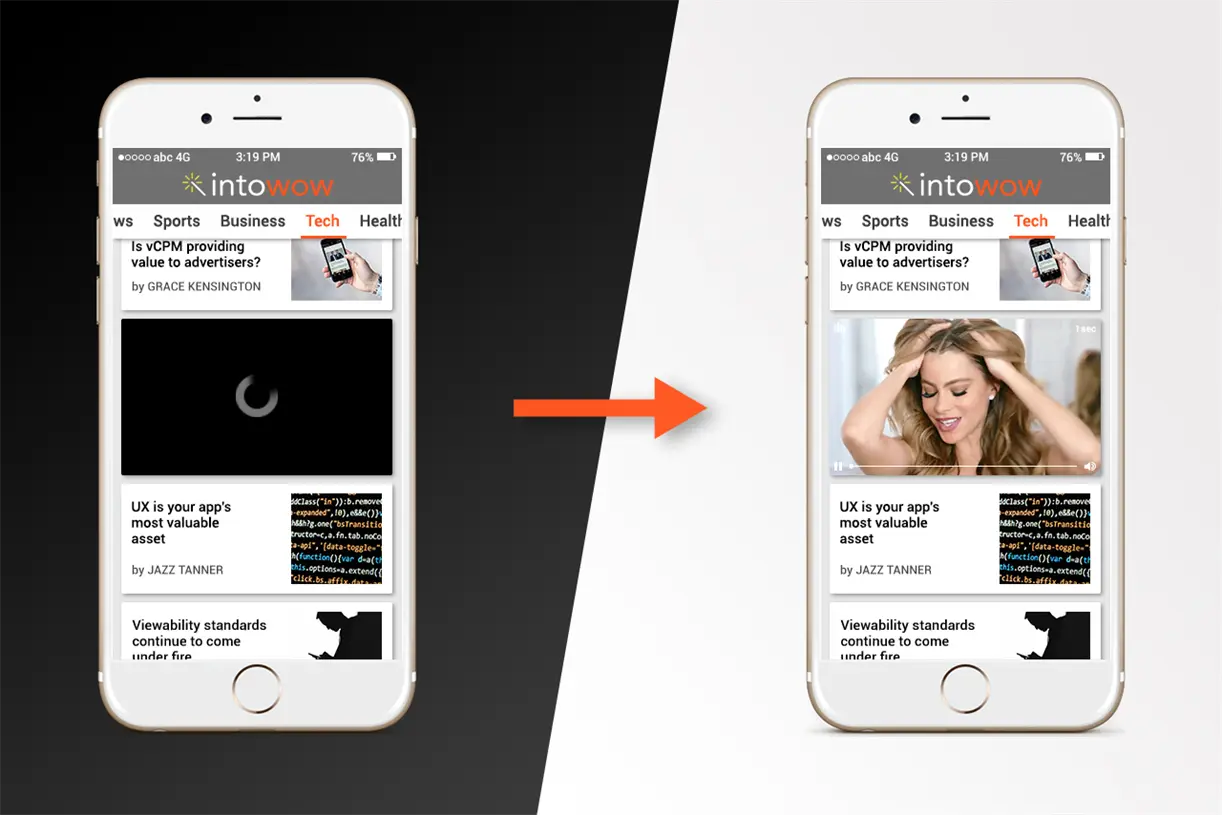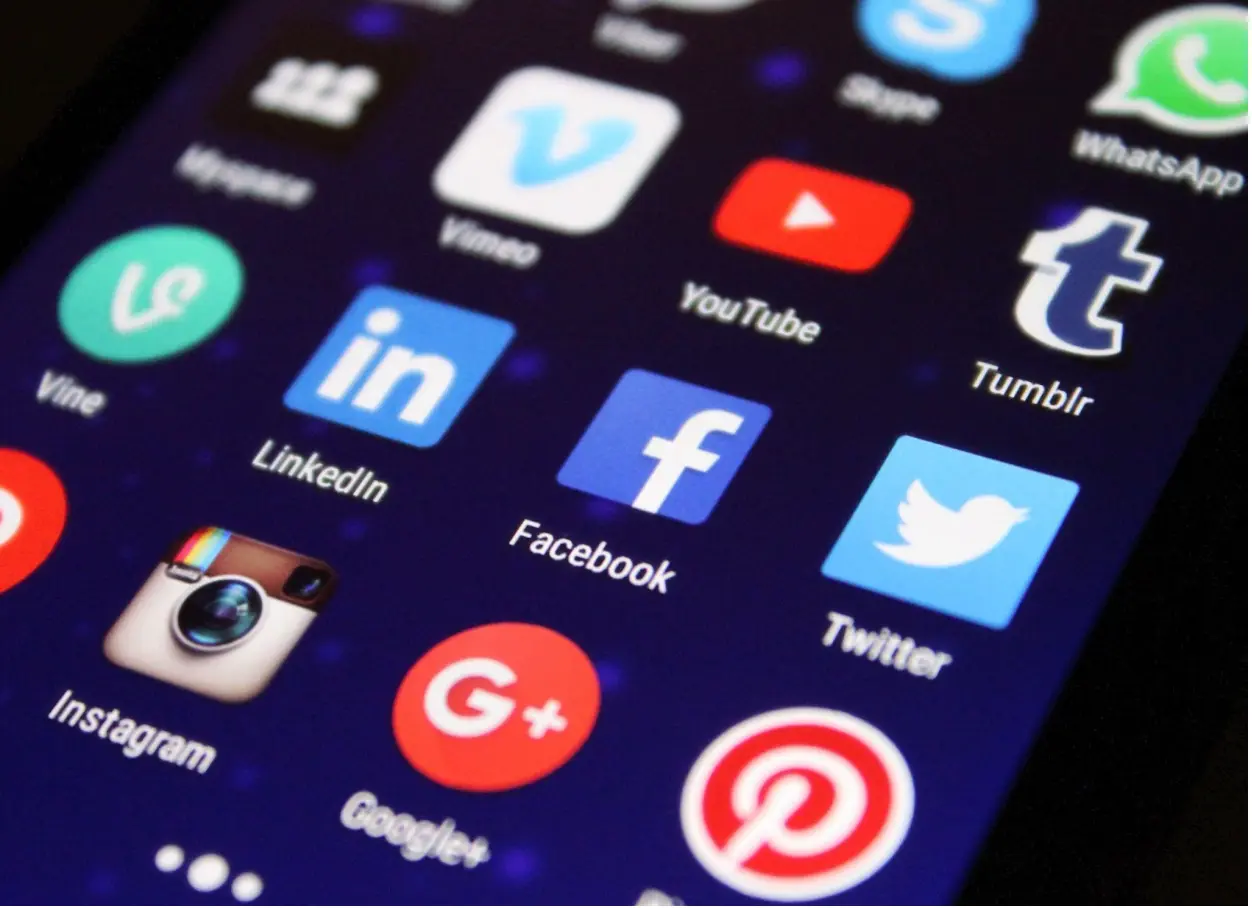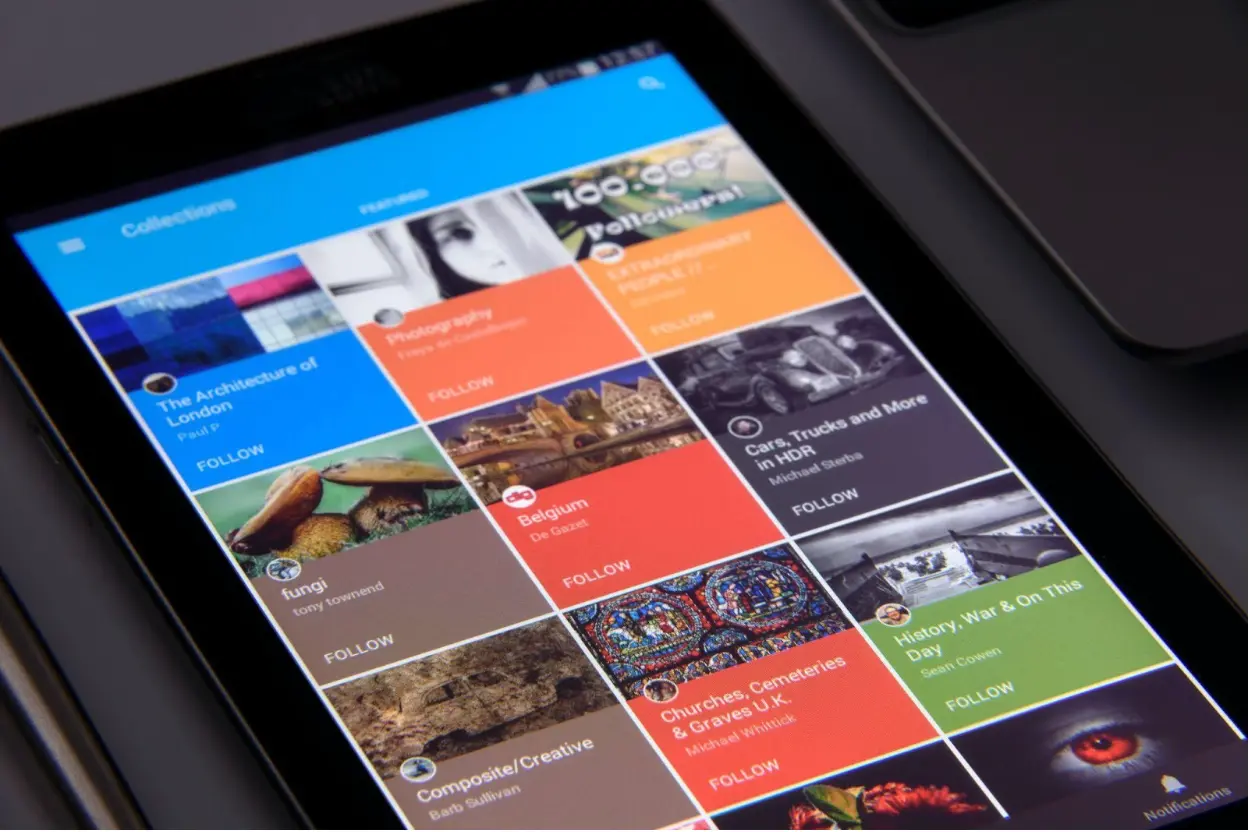How to Monetize Mobile Apps?
App Development for mobiles and small devices operating on mobile OS follows some form of revenue generation using mobile app monetization. Whether that be in the form of in-app purchases or ads, there exists some form of revenue model for businesses operating the apps.
For startups and small businesses, understanding the app monetization and finding the right monetization model can be difficult as considerable attention to the app genre, user experience settlement, and the target audience is required. There exist a lot of classifications in the same mobile app monetization model as well so finding the right balance can also be difficult. The breakdown of steps along with their importance has been covered to clear all the details of how to monetize mobile apps.

What it is?
Handling a business that operates on mobile apps can be costly not only from the development perspective but also after the app release. It is because of the hosting, domain, server cost, and paid services incurred in the app. Thus, businesses require some means of app monetization. Generating revenue from mobile apps via providing services, selling products, or using some other means such as third-party ads, subscriptions, in-app purchases, etc. is referred to as monetization of mobile apps.
Most of the popular apps nowadays are linked with some form of monetization. For games, there are in-app purchases, rewards, banner ads, etc. available. On the contrary, there exist ads in the form of posts, videos, sponsors, and partners for social media apps. Hence, this ecosystem helped maintain the business linked with the app and the interaction with the general audience.
Read also: How to Outsource Mobile App Development
Importance of App Monetization
In this new age, businesses have moved from the physical to the digital age. Computer Science, Artificial Intelligence, and Mobile Development have advanced to a great extent; thus, more and more businesses are creating their presence using mobile apps and are trying to create a living out of them. Considering this, it is essential to monetize apps to keep the cycle of income flow running.
Based on the business plan, app monetization for a business can provide sustainability and support. Not only does it generate income, but a good app can guarantee revenue for an extended period. Thus, using the same tried monetization model on a similar app can also be guaranteed.
Finally, app monetization techniques help a business grow and create a good reputation in the market. Using ads in the right place and providing in-app purchases and subscriptions on quality features and content guarantees the app’s worth on online stores and platforms.
Models of App Monetization
There are tons of app monetization models, each depending upon several factors. Over the years, different models of app monetization have appeared based on different social engineering techniques, understanding consumer behavior, and marketing trends. Not only more than one monetization technique from different models can be chosen but also a mix and match according to personal app flow can be created. In addition, a kind of amendment to the app monetization models relating to own requirements can be done to get a great chance of successful monetization.
The details of the most popular mobile app monetization models have been covered below.
Advertisement
Advertisement can surely be regarded as the most famous means of app monetization because of its extensive use in almost all the highly-grossing apps. There are advertisements in social media apps, music apps, video streaming apps, etc. however, the most common influence of advertisement can be seen in games. Although it can be really frustrating to see ads after every instance of app use, it can act as a major source of revenue for game-developing businesses.
According to research around 50% of games prefer to see no ads while playing games. Thus the inclusion of advertisements in games can be a source of getting a paid version of the app to get an ad-free experience. Some of the most common types of advertisements in mobile apps for revenue generation include the following.
Banner Ads

Banners are the simplest form of advertisement for revenue generation. Appearing in the form of static images or animations, banners can appear at the top or bottom or can be placed in some spacious area in the app. It is important to note that these banner ads should be informative or attractive enough for a call to action. Thus, providing relevant and suitable information in this way can increase a business’s revenue.
Banner ads were the main means of revenue generation by advertisements before the arrival of other forms of ads. Usually, businesses use it on their free apps as a call-to-action method to get paid versions of the app with better features. However, most of the apps using banners create a bad user experience as they cover a great area of the app. It diverts the attention of the user from the main functionalities so it needs to be used really carefully. Considering the small size of the mobile screen and the complete width of the banner on the app, the cost per impression value is really low.
Interstitial Ads
Interstitial advertisements are the form of revenue generation techniques in which ads appear on the full screen covering the entire area. In contrast to the banner ads, they interrupt the normal functioning in a way that the user is not able to perform any other thing as the ad covers the touchable area. Interstitial ads appear in between pauses and breaks where some sort of loading is required. However, there are many instances where these advertisements are not placed naturally which creates a bad user experience and degrades the overall performance of the app.
Interstitial advertisement has a separate user flow. A great understanding of the app is required to implement these sorts of ads. First, all the loading or pausable areas should be identified. Rather than showing the ad in every instance, proper logic should be kept in mind. So whenever there is some time to bring a new screen to the interface, an Interstitial ad can be shown. This is an intelligent and natural way to show interstitial ads. The best example of this flow includes ads between different game levels.
Native Ads
Native advertisements are the paid form of revenue generation through which a business can match the in-app advertisements according to the niche of the app. These ads differentiate from other ads in the way that it creates a personalized experience. Based on the content of the app, relevant ads can be displayed. Thus, native ads eliminate the random persona of advertisements.
According to research, it has been found that native advertisements offer more revenue. The cost per impression of native ads is higher because the users are inclined towards the same taste, resemblance, and similarity of the ads that the app offers.
Video Ads

Video ads can be a powerful source of revenue generation as it is an amazing way to capture users’ attention and interest. Video ads can be seamlessly integrated into different video-based content apps and other format apps to show the users things based on their interests. This ultimately increases the CPM because there are great chances that the user may be looking for such an item, product, service, etc.
The most popular cases of video ads can be seen on Youtube and Facebook apps. In most cases, these apps display video ads based on user interests. For an app, user interest can be captured and related video ad content can be displayed to engage users.
Rewarded Ads

Rewarding advertisements create a revenue model for businesses by offering something at the end of seeing the complete ad. These ads can be in the form of videos or a list of ads shown as images, pop-ups, or carousels. The most common example of rewarding ads can be seen in games where the users are rewarded with points or lives if they watch a video app during an instance of the game. Thus, these forms of ads are not only beneficial to the users playing the game or using the app but also for the businesses as it increases the CPM level.
Playable Ads
Offering a limited version of the app for free before the users are asked to get the complete version is referred to as playable ads. These forms of ads are offered in prototype versions of apps and games. When the user gets the complete experience of the prototype app or game, they are asked to get the complete version by depicting an ad. Thus, the ad starts by giving the complete experience and then a call to action from where the user can get the complete app or game.
Playable ads are really common in games. These ads appear in between different games so a nested game download chain begins. Although it can create a bad experience by diverting the user from its original task, it is a better approach to increase the CPM as compared to general ads.
Affiliate Ads
Affiliate advertising is a method of digital marketing through which the users can write a copy of other products or services as a call to action. Affiliate ads can be made available by networking with people and getting their permission to include their products or services in exchange for revenue. As all the app contains content of some kind, references to related items along with the call to action can be given.
An essential aspect to keep in mind with affiliate advertising is to keep the natural flow of content. Forced references can be identified easily therefore a business should make sure to keep a humane flow with the affiliate ads and not make them sound robotic.
Read also: Considering Fintech App Development: Where to Begin?
In-App Purchases

In-app purchases refer to a monetization model in which some of the features or functionalities of the app are locked and are only available based on the purchase.
In contrast to the advertisement model, in-app purchases offer a better user experience as there is no constant interruption of ads. Although the app may limit some of the main features because of the in-app purchases, there will be some free features for all people to use without any payment. In-app purchases are further categorized into consumables and non-consumables categories.
Consumables
Consumables include the category of purchases in which there is only no one-time payment involved and the purchased item, feature, or version of the app will remain available only for a specific time period. Such app purchases are only linked to targets or levels of the app and may not hold any value after their initial use. The most popular examples of consumable/in-app purchases include buying tokens or points in games, getting hints or clues for game levels by paying extra, and game or app currency to avail of something.
Non-Consumables
Non-consumables refer to the in-app purchases that are linked to a one-time payment to get lifetime access to the mentioned feature, service, or functionality. Such app purchases are linked to the complete app and the purchased item, feature, and functionality resists the account it is purchased from. Examples of such app purchases include getting a premium version of some music app for high-quality streaming, unlocking some character in a game, or upgrading an app to get some new features.
Subscription-based services
Another popular monetization technique for mobile apps includes subscription-based services. This model of monetization provides a way for businesses to offer service-based content to users on a monthly, bi-monthly, six-months, or yearly basis. Subscription-based services are getting more popular nowadays and are becoming an accepted means of monetization for most public apps. Thus, rather than setting a price for the app, businesses are setting their apps free to download but using the subscription model later on to capture the audience.
Subscription-based services differentiate from in-app purchase models in a way that it does not treat their app content or features as purchases. Instead, the content in the app is offered to users as subscription packages. Thus, there can be different models such as free tier, basic plan, advanced plan, and so on.
For a business working on providing some content such as books, videos, articles, etc. to the public, subscription-based services can be ideal as it provides a way for a business to keep its monetization cycle running and a way to keep adding new content to retain users. The most popular examples of subscription-based service apps include the Medium app for articles, the Netflix app for movies and TV shows, the Kindle app for books, and the Spotify Premium app for Music.
Subscription Plans
A business can create different subscription plans based on what their app offers for monetization. Usually, apps offering subscription-based plans start with a premium app which is a free app offering the general version of the app. Later on, once a complete understanding of the app is made, different subscriptions of the app can be availed.
For a simple app, a basic level of subscription plan with different content access can be provided. However, for an app offering tons of features and functionalities, different levels of subscription plans such as basic, mid-tier, and premium subscription plans can be created.
A lot of top-tier apps follow the subscription mentioned above plan style. The most suitable example for this includes different cloud storage buying plans. These plans are divided into different branches based on the amount of storage they offer.
Read also: The Importance of Healthcare Mobile App Development in the 21st Century
Collaborations and Sponsorships
Although not so common, collaboration and sponsorship can be a great way for mobile app monetization. Through this method, a business can approach different brands and businesses to feature their app as affiliate advertisements in other apps or directly sponsor them based on providing the value of any kind.
Sponsorship provides a two-way benefit in the way that it gives the business reach by the app’s target market and gives the app revenue from the business. Different businesses having similar target markets or app niches often collaborate to provide the users with the best of everything they offer. Thus, the mobile app can incorporate something related to its partner as ads and in return, the business can offer some deals to mobile app developers or businesses working behind it.
Optimizing Mobile App Monetization
Just like other revenue models, mobile app monetization models also require optimization in order to get the best results. For this, the monetization techniques for the app should be kept in mind while the app development is ongoing. It is generally considered a bad practice to work on ad inclusion features after the app completion as the app will not be fully integrated with different types of ads, sponsorships, etc.
While including in-app purchases, it is important that these purchase items provide value. If it is not useful, helpful, or advanced, it is evident that the user will get frustrated and will lose interest. Therefore, in-app purchases have to go the extra mile to provide something out of the box.
A business can offer exclusive offers to users based on their engagement with the app. Several discounts and coupons can be given to users if they use the app for a certain period. Not only it increases the app usage time, but also gives users an understanding that the app values their users by providing them with something beneficial.
Different automated tools can be used to generate ads based on user interest. Rather than showing random ads or showing the same ads again and again, a script can be used to show users the ads of their interest. User preferences can be stored based on their activity and then relative banner ads, video ads, Interstitial ads, etc. be shown. This way, calls to action along with user engagement can be increased.
Which model best suits you?

There are different app monetization models described above such as subscription-based services, in-app purchases, and advertisement models. For a business to identify which model suits their requirements, careful detailing of the app niche, target audience, and overall understanding of the app is required. Different models work better with different apps; therefore, it cannot be said that one particular is the best. To find the most optimal revenue generation outcome, the business usually has a mix of the above-mentioned models. For example, a business may incorporate video ads and also include subscription-based services to offer high-quality content with download features.
Mobile app monetization can be a great choice for businesses to generate passive revenue. Popular apps can become a primary source of income as the impressions and calls to action are really high. Thus, you can choose the most suitable combination that best fits the user experience while covering different aspects of increasing the CPM.







